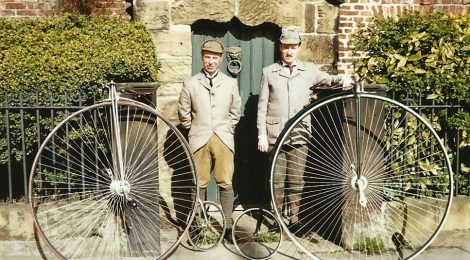
Beamish Transport Objects In Focus… Number 4 (Part 2)
The Beamish Cycle Collection
Part 2 The High Bicycles by Ian Bean
We saw in part 1 how the velocipede had started to develop to meet its rider’s demands. By 1870 James Starley and William Hillman had left the Coventry Machinists Company and patented their own design, the Ariel. The Ariel was the first British bicycle constructed entirely from metal, made in quantity. Selling at a reasonable £8 it had wheels based on the tension, or suspension, principle rather than the compression, wooden wheels of the boneshaker. These wire spoked wheels were much lighter and stronger, allowing the wheel to grow, yet be much stronger.
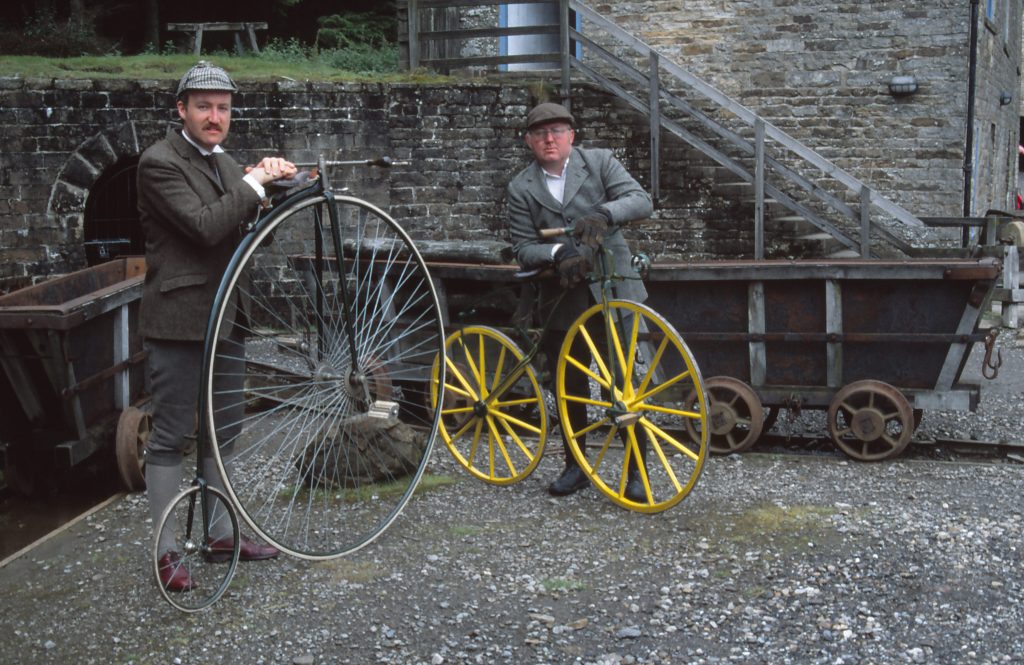
The Ariel had all its spokes tensioned simultaneously by two levers. In 1871, W. Grout introduced a wheel where individual spokes could be tensioned. In 1874 Starley brought out a wheel design which finally left the cart-wheel design completely. This design introduced tangent spoking. In this wheel the spokes leave the rim at an angle with adjacent spokes in almost opposite directions so that a tangent on one side of the wheel was balanced by one on the other side.
The difference is easy to spot as tangentially arranged spokes cross each other, radial spokes do not. Tangent spokes allow the forces of propulsion and braking to be efficiently transferred to the wheel rim.
The reign of the high bicycle lasted for around 15 years from 1870 – 1885. This later year saw the introduction of the “Safety” (more on these later). Production of the “Ordinary” continued until 1892. I hope this assists you in understanding the use of the “High Bicycle or Ordinary” terms as, until the “Safety” bicycle, these high wheeled machines were just ordinary bicycles. The nick name “Penny Farthing” was not coined (excuse the pun) until they were becoming a rare sight on the roads. This name, although hinting at the likeness of the wheels to the two pre-decimal coins was also a reflection of the obsolete machine’s resale value!
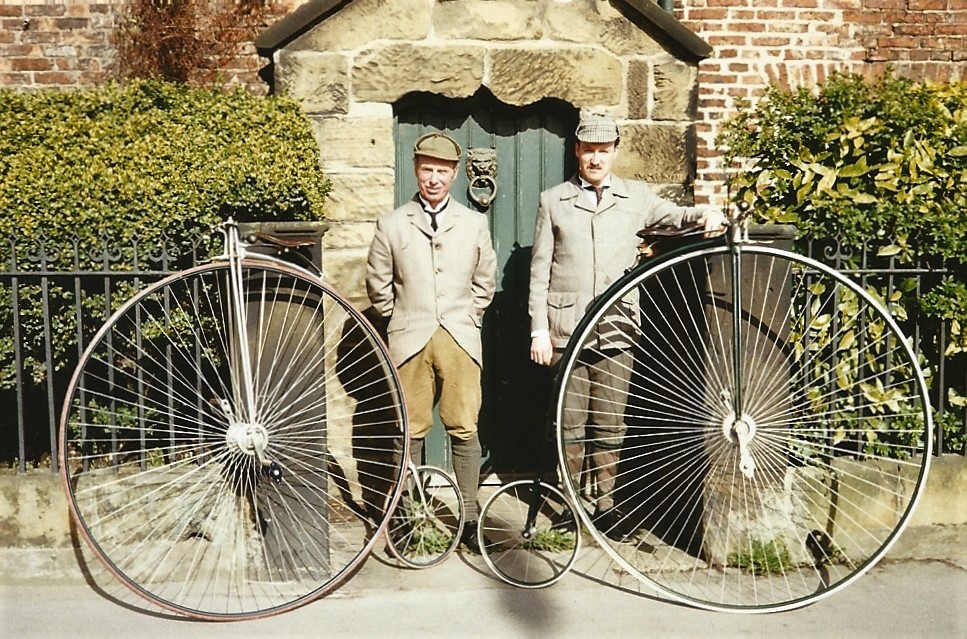
Machines were sold by the front wheel size and ranged from 48 inches to 60 inches in 2-inch divisions. A good high bicycle weighed about 1 pound for each inch of front wheel diameter and racing machines could reduce this by 50 percent. Riders would aspire to the largest wheel possible and professionals, or those willing to pay extra, could have wheel sizes built in non-standard sizes. The high bicycle was much more comfortable than the boneshaker, and much faster.
This period saw the start of serious competition and long-distance riding. The large wheel and tension spoking absorbed road shocks well and was one of the reasons that people still rode ordinaries after the coming of the Safety. Following the debut of the Rover Safety in 1885 many makers produced “Rational” design high bicycles. With more rake in the front forks and larger rear wheels, these machines helped to stave off the Safety revolution until the pneumatic tyre finally allowed the small wheeled bicycle to match the comfort of its taller cousin.
There were attempts to make the high bicycle safer, with designs such as the Xtraordinary (Singer) and Facile (Beale & Straw) using foot levers to allow the rider to sit further back. The Kangaroo (Hillman, Herbert & Cooper) used a smaller diameter, chain driven front wheel geared up to replicate a much larger diameter. The American Star had the rider sitting over the large rear wheel with the smaller wheel leading.
Bicycle riding had become a social activity with many clubs being created. These clubs tended to be quasi-military with a bugler and club uniform. The purchase of a bicycle was still a considerable expense and the riders became known as “cads on castors”. Riding as part of a club gave an air of respectability and safety in numbers. It was not unknown for cyclists to be brought down by the drivers of horse drawn conveyances! What a sight those cyclists in large groups must have presented.
Beamish has five High Bicycles in its collection dating from c.1881 – 1884, which are described in the picture captions below.
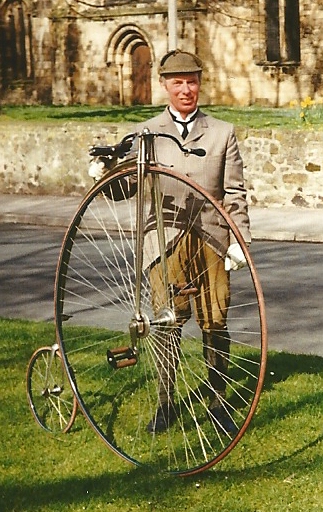
A spoon brake is fitted to the front wheel. The 52″ model cost fifteen pounds and ten shillings when new and the fully nickel-plated frame it has, would cost an extra four pounds. Ours has the standard buffalo horn hand grips but ivory ones were available at an extra one pound and ten shillings. The D.H.F. is fitted with Premier’s patent adjustable step.
The wheels have spokes which are screwed directly into the hubs. To fit spokes the wire must be cut to length, a thread added at the hub end and a rivet head formed at the rim used for retention. Photo Ian Bean
This make, and model, has strong local connections, thanks to a gentleman called George Waller. George set up a cycle training school in Byker and rode professionally for Hillman Herbert and Cooper, so it is just possible that our machine came from this school, but we may never be able to prove this. For more information on world champion and local hero, George Waller please see Heaton History Group’s site: https://heatonhistorygroup.org/2013/12/30/george-waller-geordie-world-champion-cyclist/
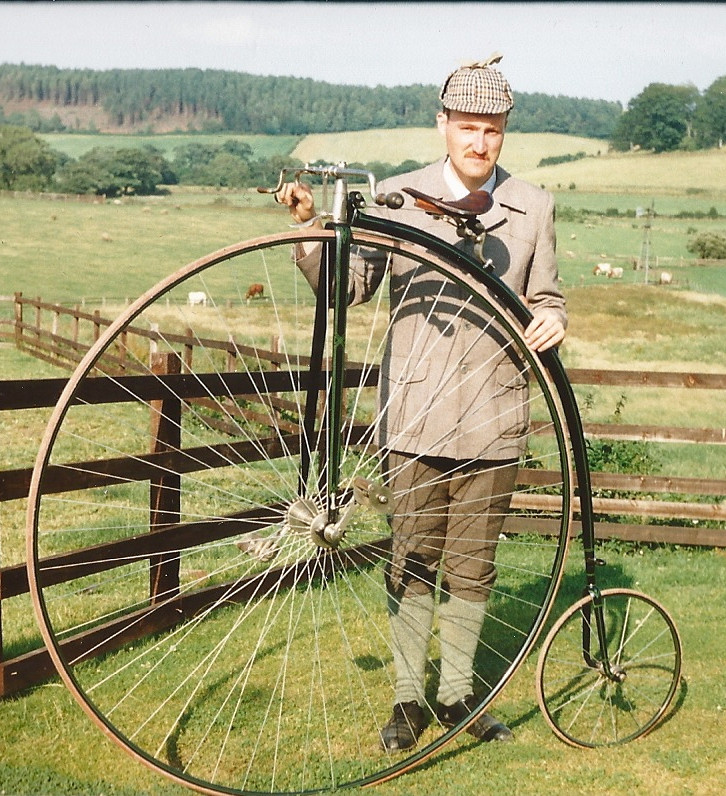
Coventry Machinists used a seat spring mounted in rubber suspension blocks to increase the rider’s comfort. The C.M.C. spoking method is different at the hub attachment. The spoke head is formed and passed through the rim before a threaded sleeve is fitted by silver soldering to the opposite spoke end.
You must remember to fit the locking nut and cover before soldering commences! This machine exhibits little sign of use, suggesting it may have been bought by an owner who lost interest quickly, or was perhaps a bit too short to ride this large bicycle. Braking is by a spoon on the front wheel. Both the C.M.C. machines sport extremely elegant spines and forks made from thin walled tube tapered in two directions. Photo Ian Bean
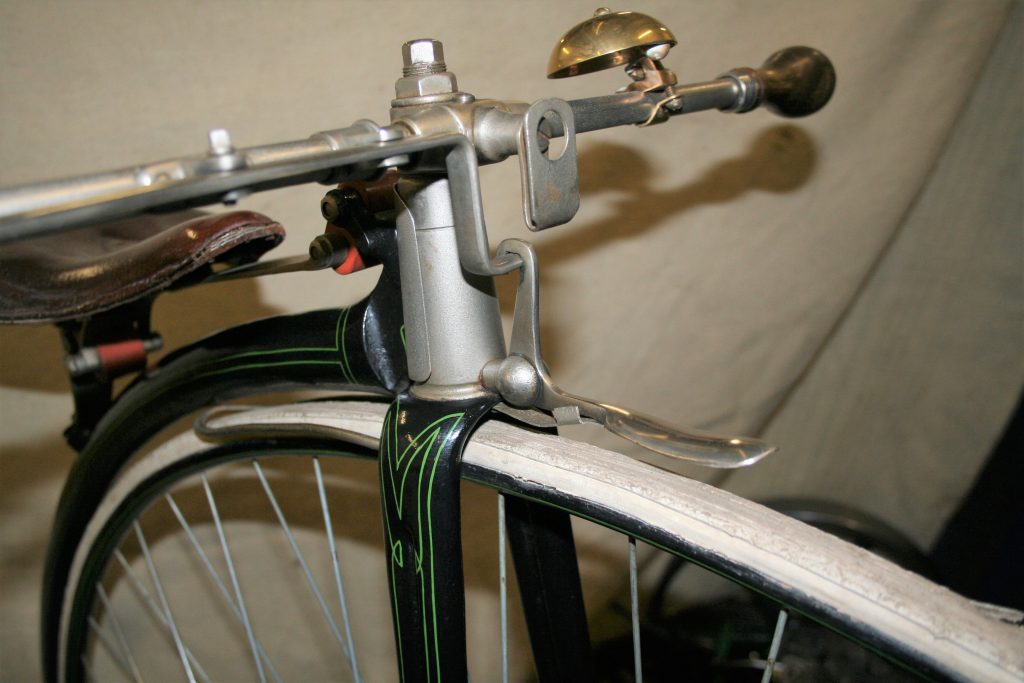
Earlier high bicycles sometimes had roller or plunger style brakes on the rear wheel but as the front wheel grew and the rear got smaller these became less effective. A similar style brake was sometimes fitted to the front wheel and the Special Club may well have had this fitment or used handlebars of this style.
The brake would be operated by turning the handlebars to depress the brake via a lever at the front of the head stock. It appears this system may have been fitted to our machine as the bars are loose in their mount but secured by a set screw. The peg aperture at the front has been covered with a lamp bracket. Equally possibly, C.M.C. may have been using up parts from stock and modifying them to current standards. Photo Eric Waugh
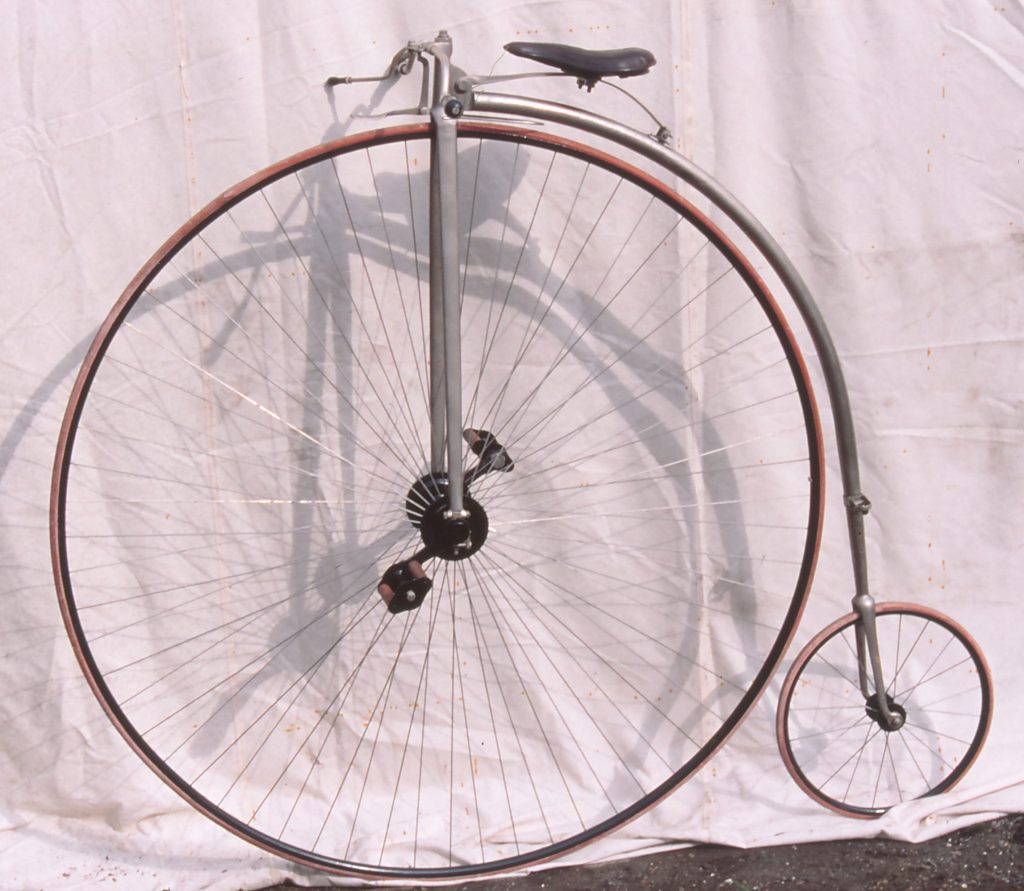
This machine was in very poor condition but complete apart from pedals. The machine had been red painted at some point during its life, however under the fittings which had never been removed the original, fully nickel-plated finish was still visible. After much head scratching, and trial pieces, we managed to produce two replacement fork blades which were brazed onto the existing crown and bearing carriers. Photo Eric Waugh
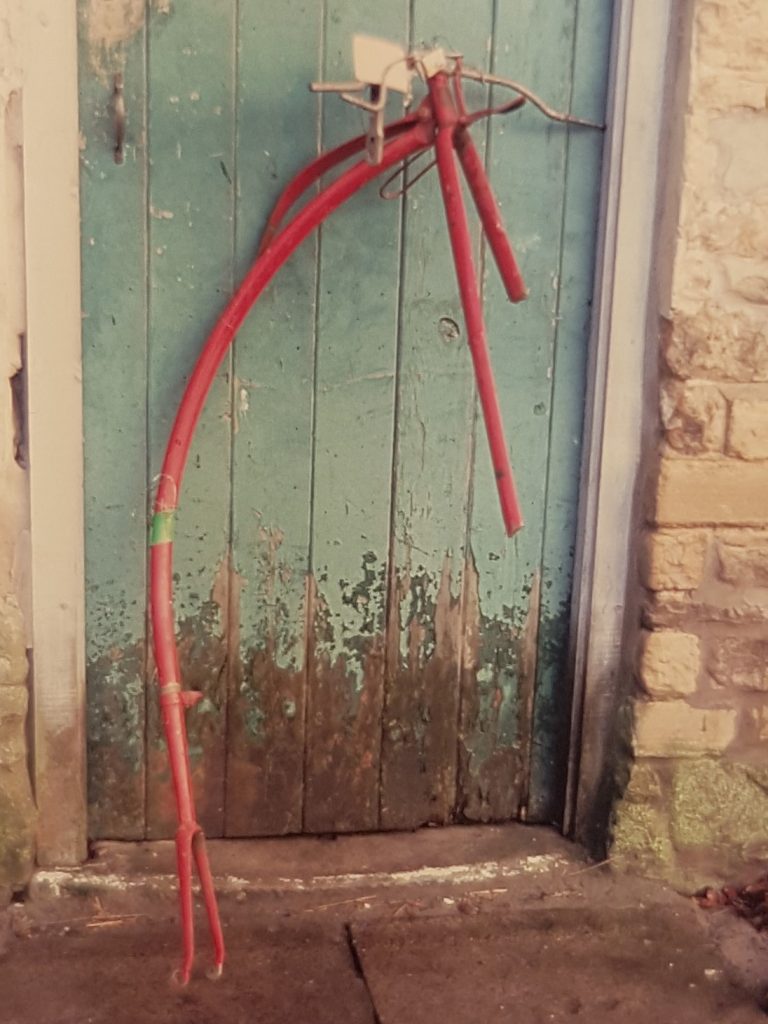
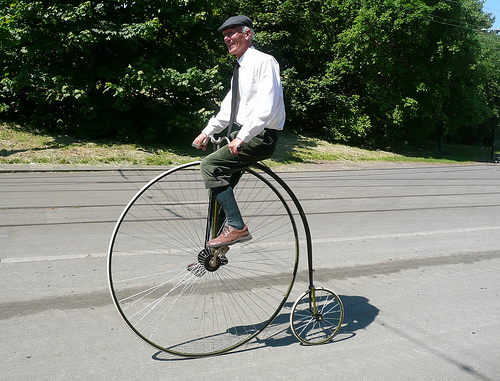
Photo Ian Bean
For more history on Daniel Rudge see: http://www.historywebsite.co.uk/Museum/Transport/bicycles/Rudge.htm
For those of you with keen observational skills there is a replica high bicycle in the rafters of the Town garage. This represents the fate of many machines once they ceased to be ridden. With over 500 manufacturers many machines have survived as they were not readily cannibalised, apart from rear wheels, and took up little space in sheds and roofs.
Restoration – When starting the project to restore the cycle collection, we thought it would present less problems than motorised restoration. The problems were no less, simply different and certainly challenging! The Friends of Beamish workshop volunteers were given the brief to restore the cycles to rideable condition. This does apply certain restrictions regarding the retention of original materials.
We always keep objects as original as possible but riding a high bicycle with original spokes is risking disaster, particularly as they must be removed during the restoration. Before any dismantling occurs, the objects are compared to period adverts and catalogues to establish any repainting or modifications which may have taken place since manufacture. Paint finishes and lining are drawn up and photographed so that they can be replicated.
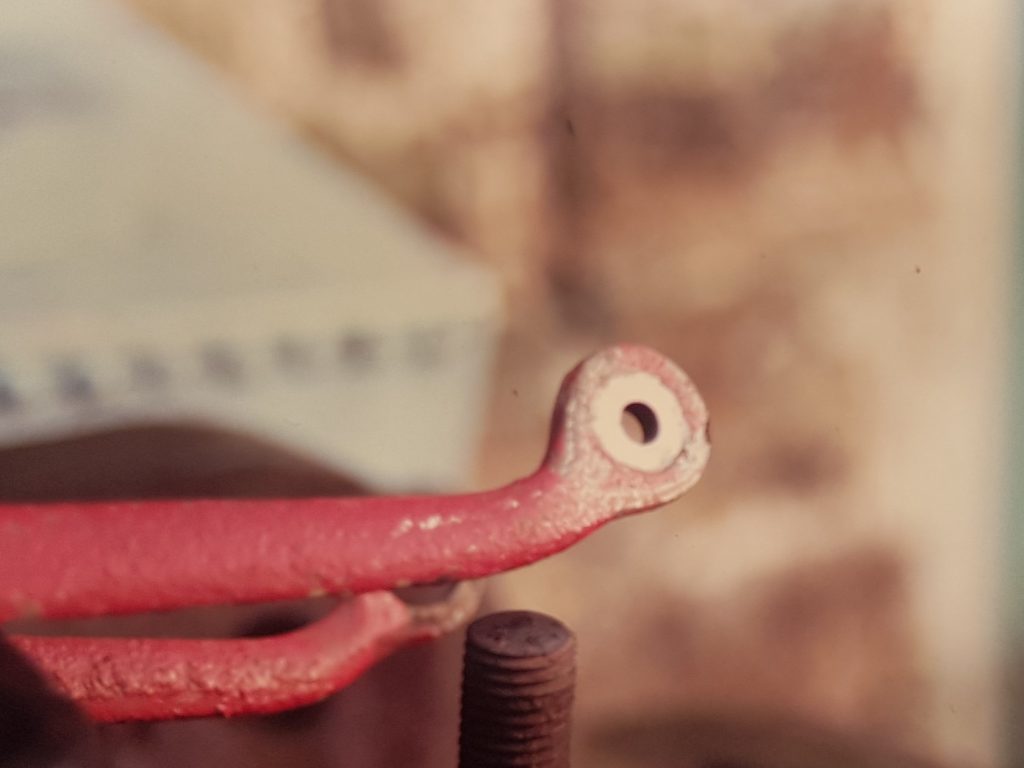
Any corrosion is addressed, and bright parts polished by hand in readiness for plating. Hand polishing is slow but ensures that fine detail is not lost. We use matt colours from the period completed with several top coats of varnish. Bearings are examined and repaired with new balls and any replacement parts are marked so future historians are not misled. Our main concern with any replacement component is to maintain authenticity in design and material.
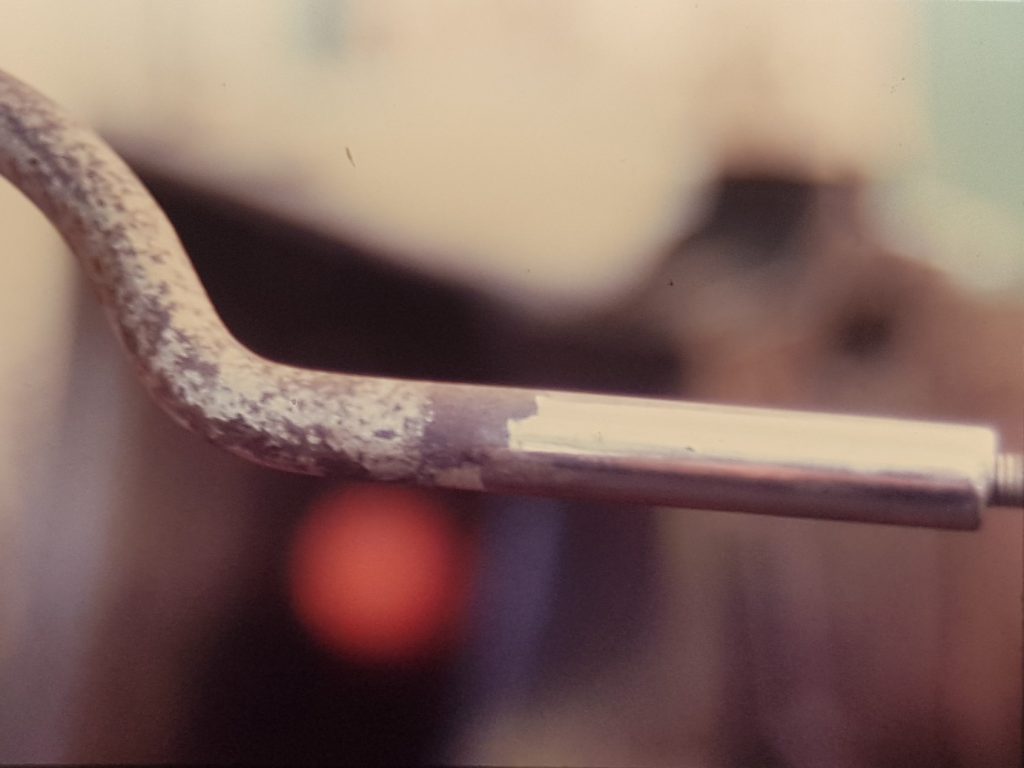
A constant problem with the Victorian cycles was that the manufacturers used their own, individual, thread forms, and these needed to be identified and copied on many occasions. Fortunately, solid rubber tyre is still available with a coiled wire centre allowing it to be locked together and stretched on to the rims. In the Victorian period rubber tyres were generally brownish red or natural cream rubber shades. Black rubber tyres only became common place in a much later period.
To complete the interpretation of the cycles and reflecting that by this stage cycling was becoming serious transport, some of our machines are fitted with oil lamps and gongs. A local enthusiast had some replica gongs produced and we fitted the D.H.F. Premier and C.M.C. Special Club with these.
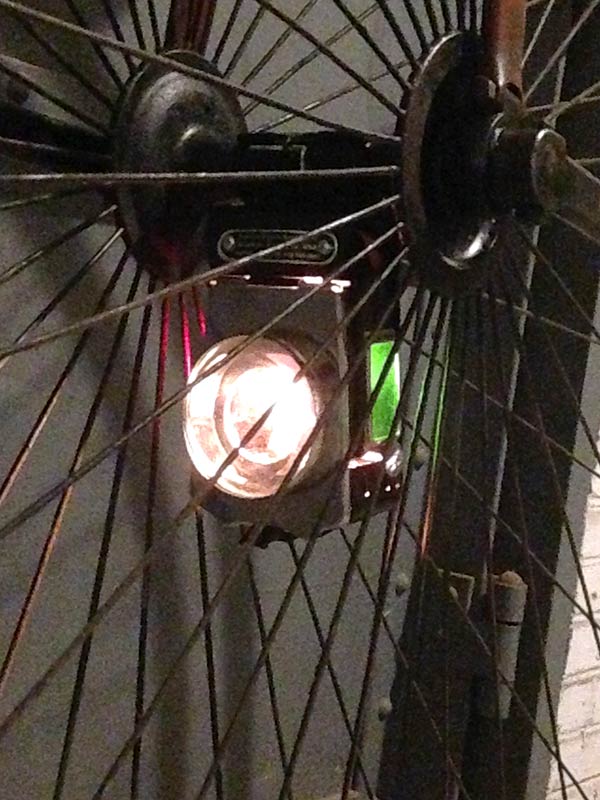
Notes on riding: For the uninitiated riding an “ordinary” can look difficult, it is different to riding a safety but not too difficult. Getting on and off takes practice and a degree of determination. The rider takes hold of the handles, places their left toe on the step and uses their right foot to produce forward momentum.
Once moving the left leg is used to lift the rider into the saddle and once seated the pedals are picked up and away you go! Getting off is the same procedure in reverse. Steep downward slopes should be treated with great care due to the rider’s position over the front wheel. The “imperial crowner”, “coming a cropper” or “the header” are all terms referring to the precipitative descent over the bars.
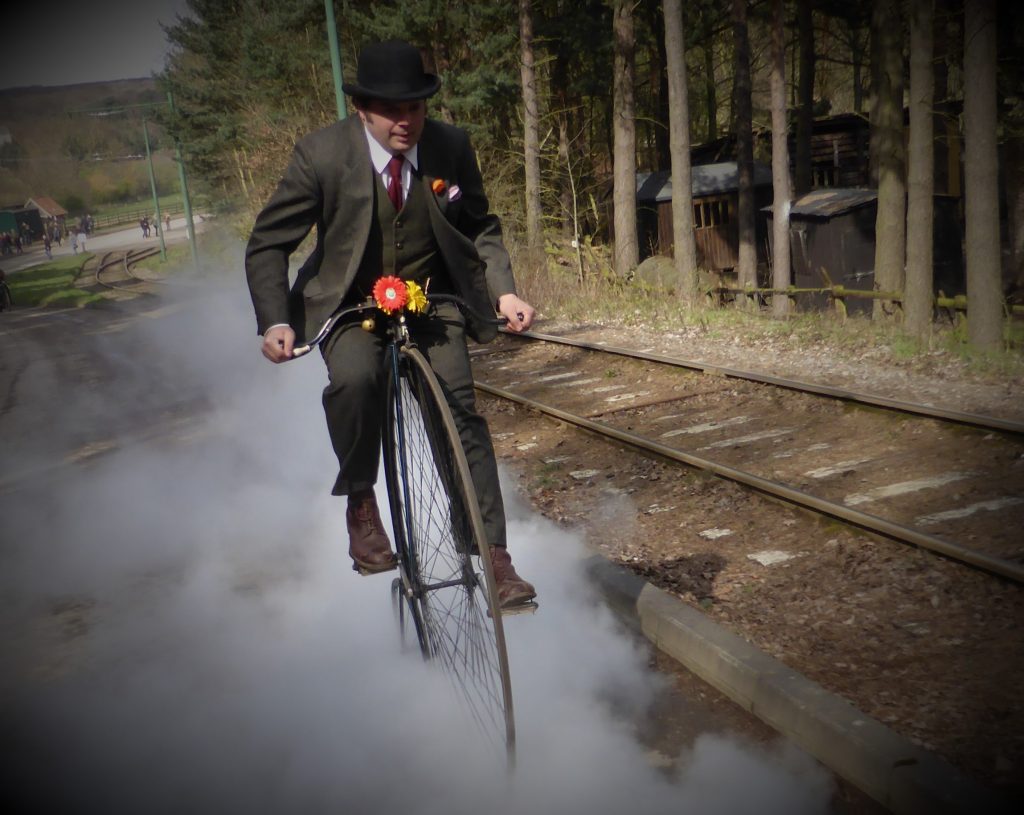
Riders were recommended to ride downhill with their legs over the handles so that if an object stopped the wheel the rider would be pitched on to their feet. You will notice a small wire loop which sits on top of the tyre behind the front forks. This is the trouser, or flint, guard and fitted to stop any object being carried into the fork gap and jamming the forks to the front wheel.
As the machines developed, dropped bars and spade grip handles became common allowing a more natural riding position in the same way that pegs are fitted to the bars of modern machines.
Recommended further reading
On Your Bicycle – an illustrated history of Cycling by James McGurn
Cycle Clips – a history of cycling in the North East by Tyne and Wear Council Museums
Early Bicycles by Nick Clayton Shire Album 173







Again a worthwhile read.
Probably explains a lot of injuries in the period afecting our grandparents.
Lock down news, very interesting.
Thank you.